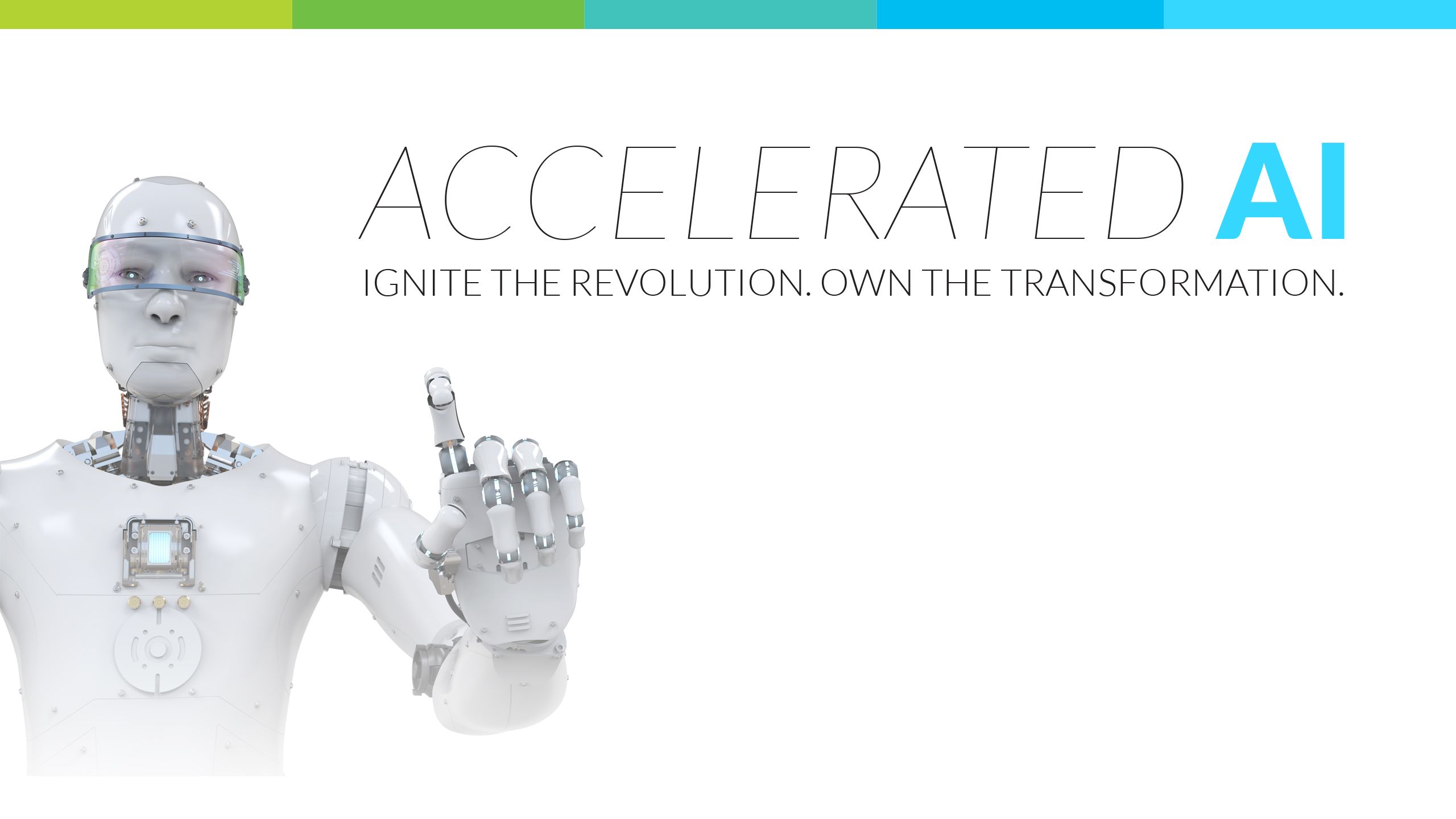7 Steps for Getting Started in AI


GAI, Dell EMC and NVIDIA are working together to help agencies accelerate their path to artificial intelligence in order to drive mission success.

Raw data is like crude oil:
We know where it is, we know what it is, but unless we do something with it – pump it out of the ground, refine it and finally turn it into energy – it remains nothing more than untapped potential.
So it is with data today. Government agencies are awash with data of all sorts, from all kinds of sources. But simply generating or having all that data is meaningless unless and until you can put it to work. Until then, all you have is potential.
Artificial intelligence is the key to unlocking that potential and turning data into actionable intelligence.
While agencies have been collecting data for years, the challenge is that most of that data is just sitting in storage and its potential isn't being capitalized on,
That realization is critical: It’s the point at which artificial intelligence enters the conversation. “Leaders say, ‘I don't have enough people, and budgets are shrinking – how can I get machines to automate the data for me and to help drive me toward a logical decision?” Jadhwani says.
“Every agency is dealing with this data explosion,” Jadhwani says. "This is a major issue all over government.”
Perhaps no area generates more data than cybersecurity. “There is a massive amount of data being collected in terms of log files and machine data – coming from all kinds of devices,” Jadhwani says. “It's sitting there in storage, waiting for some human to be able to make sense of it. And the fact is, there just aren’t enough skilled cyber people to do that.”
Enter AI.
“A lot of government agencies have started looking at AI to help alleviate these problems,” Jadhwani explains. “With AI, I can analyze all that data coming in and be able to quickly identify cyberthreats, do correlations, flag any data gaps, gain visibility and provide proactive intelligence.”
As chief technology officer at GAI, Jadhwani’s role is to identify solutions to match the needs of his government customers. And these are exciting times. Rapid advances in hardware, software, storage and cloud technologies are making breakthrough AI technologies seem simple and mainstream.
For example, Jadhwani points out that in agriculture, AI might be used to examine crop and rain data or monitoring trends with common pests and treatments. “The U.S. Department of Agriculture is using AI and machine learning algorithms and computer vision to see where the pests are going, what kind of damage they are causing, and to predict where they will go next,” Jadhwani says.
Now USDA can track plants, count blooms, estimate yields and project how much produce will be available. “I mean, it's all about predictive analytics,” Jadhwani says.
This is not reacting. This is not talking about what happened in the past. … AI is going to tell you what's likely to happen with a pretty good level of confidence. Over time, that confidence level will only improve.
Local governments also are getting into the act, applying machine learning to traffic data to improve the timing and management of lights at different times of day. Police forces are tracking criminal activity and changing the way they deploy officers on the beat. And agencies that issue a lot of payments are using machine learning to get better at spotting and stopping fraudulent payments and also using a simple form of AI –robotic process automation, in which machines rapidly perform routine tasks that humans can do, but can’t do as fast as machines – to automate back-office processes. This frees people to do more challenging tasks that require reason and analysis – high order work that people do better than machines.
With so many potential use cases, the issue for agencies isn’t should you consider AI, but rather how fast can you start?
Jadhwani offers seven rules to guide anyone interested in adopting AI:
1. Start with something easy.
Adopting AI will save time and money in the long run, but in the near term, it will require a very steep investment. Achieving success on a small level builds confidence. For instance, in the field of cybersecurity, AI automated systems and algorithms can help identify and patch vulnerabilities and provide automated defense against advanced cyberattacks, where humans typically fail.
2. Focus on mechanical tasks first.
“Any task that requires a lot of repetitive work, has high transaction volume and is rules-based and non-subjective, is a good candidate for Robotic Process Automation (RPA),” Jadhwani says. Of course, there are other, more complex problems where AI could have greater potential.But starting with the basics will get you ready for more complex solutions later. The most efficient solution would be to use RPA for automating human capital management or supply chain processes that integrates backend, enterprise-level IT processes with frontend desktop tasks using a simple interface that is intuitive for system administrators and accountants alike. AI will not replace RPA, however RPA tools that use AI will end up replacing RPA tools that do not use AI.
3. Don't try to boil the ocean.
If your data set and the problem you’re trying to solve is too big, you’ll get nowhere. Agencies achieve better, faster results when they drill down deep on a given use case, then iterate rapidly to improve results. The real value lies in the aggregation of the data to test, refine, and re-test the AI engine, allowing it to perform increasingly sophisticated feats of supervised learning and unsupervised learning.
4. Don't get hung up on the hardware - or the software.
“Now, with the new advances in hardware and the new scalable neural network and deep learning algorithms that are evolving, instead of taking weeks or months to get results, you can crunch your data with GPUs and high-end memory and generate results in hours, if not minutes. So, this is very, very disruptive,” Jadhwani says. AI is taking off because big data workload processing that used to be very, very time consuming can now be done in minutes. Deploying GPUs enables agencies to optimize their data center infrastructure and gain power efficiency.
5. Cloud makes a difference.
The cost of data storage is plunging at the same time as the volumes of data are exploding. If you have large data sets in a data lake, you’re a good candidate for trying to wring savings from the numbers. “Today, I can store petabytes or even exabytes of data – at a very fractional cost. I don’t have to buy all those storage devices anymore. With cloud and massive data processing power at my fingertips, I just use the data, run my algorithm, get my results, and when I’m done, I can delete or archive the data.”
6. Modernize.
“Technology is an enabler and AI is not magic,” Jadhwani says. “If you are sitting on a lot of legacy technology, look for ways to modernize.” With IT modernization comes the potential to automate processes that cannot be automated with legacy equipment – including solutions that may involve AI. Modernizing the infrastructure includes investing in next generation technologies such as Hybrid Cloud, High Performance Compute, Hyper Converged Infrastructure, Optimized Storage, GPU Accelerated Purpose Built Appliances, High Speed Communication Networks, Geo Distributed Data Lakes, Virtualization & Containers, SDN, Blockchain, Object Storage as well as next-gen cybersecurity and privacy platforms.
7. Seek out mentors - and make them partners.
“This is a journey, so don’t just think, ‘Oh, I’m going to use some deep learning AI algorithm and I will be successful.’ It doesn’t work that way,” Jadhwani says. “You have to have a mentor, a solution provider who’s going to guide you along the path to achieve the final outcome you want.” Mentors should be more than a sounding board or advisor – they can also be valuable partners, guiding and helping you throughout the AI solution lifecycle – from inception to mission outcome. Think of that when choosing an integrator or solutions provider; getting into AI is not like buying a computer, but more like adopting a new way of doing business. You’ll get further faster if your partner has done that before.
Government Acquisitions, Inc. works side-by-side with federal IT executives and industry-leading OEM partners to modernize, optimize, and deliver unparalleled missions support. Learn more about GAI here.






